

Home
About Us
Allotments
Garden Equipment
Seed Suppliers
Manure Problems
Solve It - Puzzles
Children's Pages
GLA Blog
Weather Blog
School Veg Patch
Useful Links
Weather Blog
Garden Video Blog
Newt
Don’t get too excited if you find a newt sporting a crest and a spotted, bright orange underbelly. It isn’t likely to be the rare great crested newt. Chances are that it is a common newt also known as a smooth newt – a species very widespread across England. Common newts grow up to 11 cm in length whilst its great crested cousin can grow up to 15 cm.
All newts are protected animals and should not be kept as pets. Despite this the numbers of common newts are in decline.
The video below gives you some idea of size.
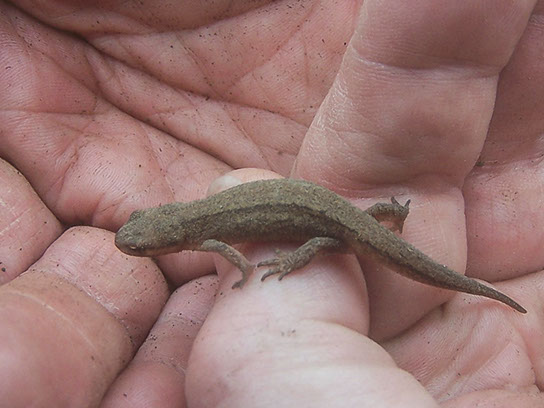
People often don’t expect to find a newt out of water and so often mistake it for a lizard, however in our part of the world you are far less likely to find lizard in your garden or on the plot. Newts move much slower than a lizard and if you can manage to get close enough to have really good look at it then it is very unlikely to be a lizard.
Newts spend more time in water than frogs or toads, however outside of the breeding season the common newt spends more time on land than other species of newt.
After breeding newts may stay in water for the rest of the spring and summer so it is likely that newts found in the garden during this time are immature. On land the skin, which newts shed up to once a week, looks dry and velvety and the male’s crest disappears. Both male and female appear pale brown or olive green, often with two darker stripes on the back.
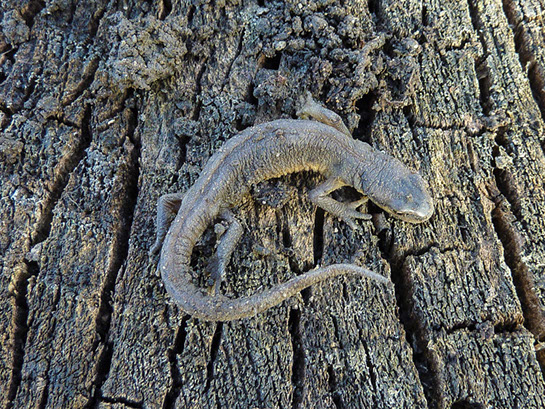
Newts hibernate from mid-October waking in February or March.
Being nocturnal they spend the day hiding under large stones or paving slabs or in compost heaps and are often exposed when digging or turning over soil.
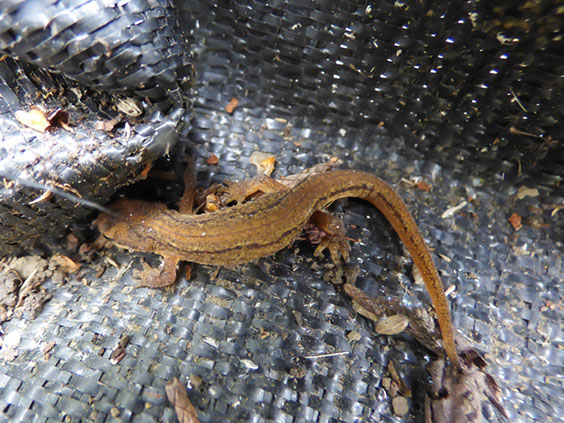
During spring, after mating the female lays between seven and twelve eggs a day, laying up to 400 eggs in total. Each eggs is laid singly in a folded leaf for protection.
Depending on temperature, the eggs hatch take between 2 to 3 weeks to hatch. Unlike frogs and toad tadpoles the front legs develop first. It takes about 10 weeks for air breathing newlets, (also known as efts), to develop. After 2 – 3 years the newts are fully mature and capable of breeding.
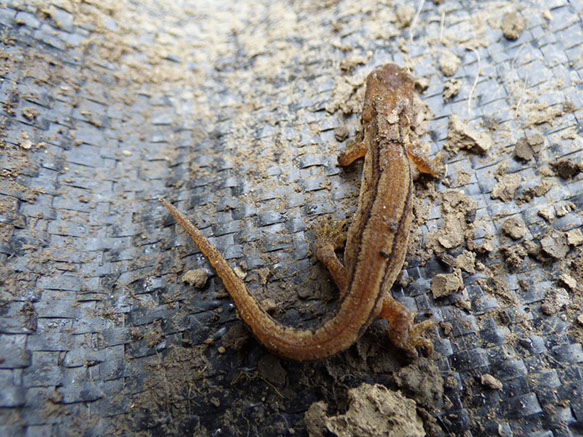
All amphibians are gardeners’ friends, feeding on insects, slugs and worms. When feeding on land they shoot out their tongue to catch prey. In water they hunt near the surface for shrimps, water lice, insect larvae, water snails and frog tadpoles which they catch using their teeth.
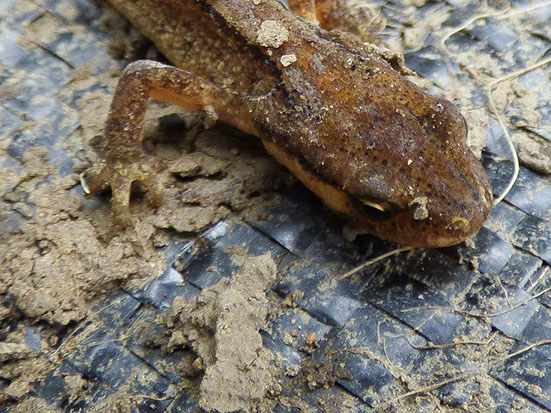
Our Plot at Green Lane Allotments Blog | A Gardener's Weather Diary | School Vegetable Patch Website
© Our Plot on Green Lane Allotments - Please email me if you wish to use any of this site's content